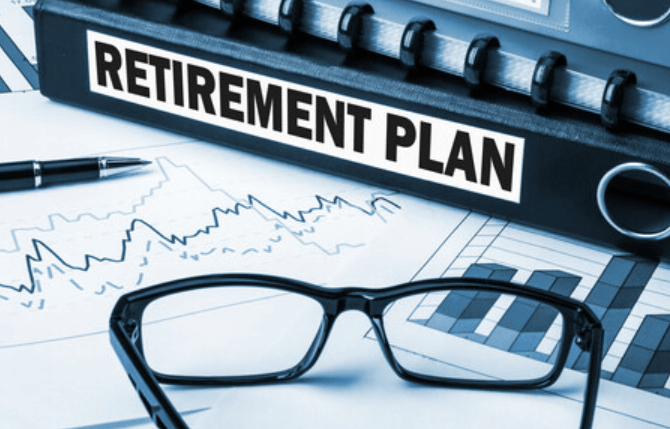What SECURE 2.0 Means for Your Business Retirement Plans

Introduction
The SECURE (Setting Every Community Up for Retirement Enhancement) Act introduced significant changes to retirement planning when it was first enacted in 2019. With the introduction of SECURE 2.0, the retirement savings landscape continues to evolve, offering new and understanding business opportunities and responsibilities. How SECURE 2.0 works is crucial for aligning your business retirement plans with these new regulations and capitalizing on its benefits.
Enhanced Retirement Incentives
One of the most essential features of SECURE 2.0 is introducing improved retirement incentives to encourage employers and employees to participate in retirement savings plans. The legislation includes increased tax incentives for small businesses to set up retirement plans, offering these benefits more accessible and cost-effective. According to the IRS, companies can benefit from the enhanced tax credits when they adopt qualifying retirement plans.
Furthermore, SECURE 2.0 introduces new provisions that make it simpler for part-time employees to participate in retirement plans. For instance, employees working part-time and fulfilling the requirement of 500 service hours per year for three years will now be qualified to join their 401(k) plan. This inclusion promises to broaden the scope of retirement savings benefits to a more significant workforce segment, further enhancing the overall workplace morale and employee retention.
Additionally, the legislation aims to improve employee retirement readiness with automatic enrollment features, allowing for higher catch-up contributions for older employees nearing retirement age. Incorporating these features into your business retirement plan can vastly improve participation rates and contribute to the financial security of your workforce. Learn how SECURE 2.0 works to understand its impact on retirement savings, tax advantages, and employer-sponsored retirement plans.
Automatic Enrollment and Escalation
SECURE 2.0 emphasizes automatic enrollment and escalation as practical tools for increasing employee participation in retirement savings plans. Automatic enrollment means new employees automatically enroll in the company’s retirement plan at a default contribution rate unless they opt-out. This provision has been shown to significantly increase participation rates, especially among younger and lower-income employees who might otherwise need to enroll.
In addition to automatic enrollment, SECURE 2.0 also encourages automatic escalation. This feature automatically increases an employee’s contribution rate by a small percentage each year, which ensures steady growth in retirement savings without requiring active decision-making from the employee. Research shows that employees tend to stick with default settings so that automatic escalation can increase retirement contributions over time.
Expanded Access to Annuities and Lifetime Income Options
Another significant change by SECURE 2.0 is the expanded access to annuities and lifetime income options within retirement plans. This offers employees more security by providing options for a steady income stream in retirement, helping to mitigate the risk of outliving their savings. The legislation reduces barriers to including annuities in retirement plans by simplifying the selection process for plan sponsors and providing a fiduciary safe harbor for selecting annuity providers.
More Flexibility for Employees
SECURE 2.0 also provides more flexibility for employees through provisions such as penalty-free withdrawals for certain emergency expenses. This can be particularly beneficial for employees facing unexpected financial challenges, allowing them to access their retirement savings without the burden of early withdrawal penalties.
Additionally, the new rules expand the age for required minimum distributions (RMDs) from retirement accounts, allowing employees to keep their savings invested for extended periods. This change can provide significant tax advantages for those who wish to delay withdrawals and continue to grow their nest egg.
Student Loan Repayment Considerations
In recognition of the burden student loans place on younger employees, SECURE 2.0 includes provisions that allow employers to treat student loan repayments as elective deferrals for purposes of matching contributions. This means that employees repaying student loans can still receive employer contributions to their retirement accounts, even if they cannot contribute to the plan themselves. This provision encourages younger workers to focus on their financial wellness without sacrificing valuable retirement savings opportunities.
Simplified Administration and Compliance
One of the challenges businesses face when offering retirement plans is the administrative burden and compliance requirements. SECURE 2.0 simplifies these aspects by streamlining reporting and disclosure requirements, making it easier for employers to manage their plans. For example, the new legislation reduces the documentation required for small employer pension plans and provides simplified processes for correcting plan errors.
Moreover, small businesses can benefit from higher tax credits for the costs associated with starting new retirement plans. This includes credits for administrative costs and contributions made by the employer to the plan on behalf of employees. These changes are designed to reduce the financial and administrative barriers that may prevent small businesses from offering retirement benefits to their employees.
Read also: Why Cybersecurity Matters for Businesses in China
Encouraging Retirement Readiness
The overarching goal of SECURE 2.0 is to improve retirement readiness for all Americans. By making it easier for businesses to offer retirement plans and for employees to participate, the legislation aims to close the retirement savings gap that affects many workers. Encouraging voluntary retirement savings through increased access, incentives, and education is fundamental to achieving this goal.
Businesses play a crucial role in this effort by providing employees with the infrastructure and support needed to save effectively. This includes offering high-quality retirement plans, educating employees about their options, and fostering a culture of long-term financial wellness through ongoing communication and support.
Conclusion
SECURE 2.0 brings about a wave of positive changes for businesses and employees, enhancing the landscape of retirement planning. With increased incentives, streamlined administration, and new provisions that broaden access and flexibility, businesses can better support their employees’ journey toward a secure retirement. Understanding the implications of this legislation and adapting your business retirement plans accordingly is crucial to maximizing these benefits and fostering a financially resilient workforce.
By embracing the opportunities presented by SECURE 2.0, businesses can comply with the latest regulations and cultivate a more engaged, loyal, and financially secure employee base. In turn, employees are better positioned to achieve their retirement goals, contributing to a more stable and prosperous future for everyone involved.




